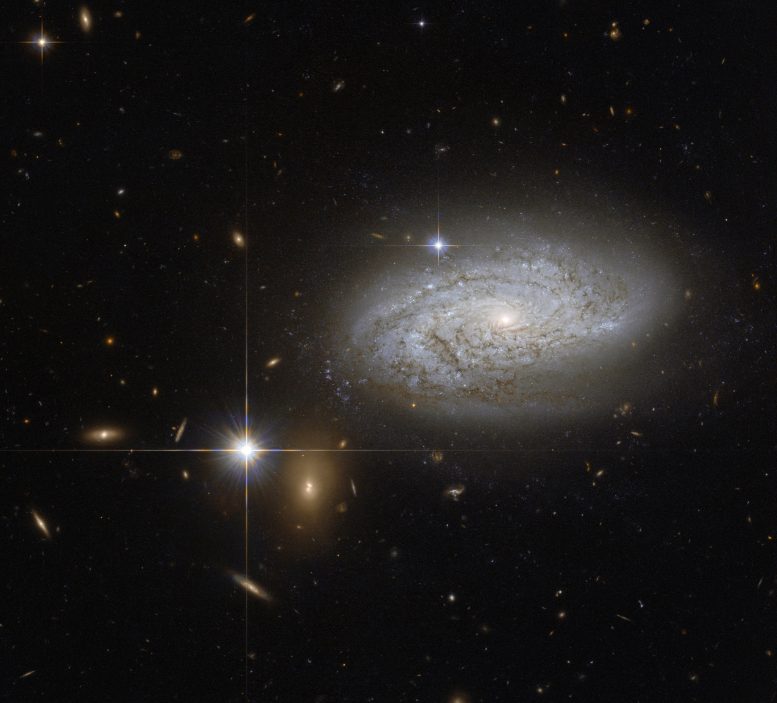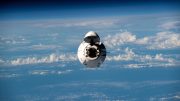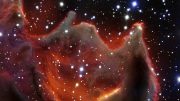
NGC 3021 lies about 100 million light-years away in the constellation of Leo Minor. Credit: NASA & ESA; Acknowledgement: A. Riess (STScI)
This newly released Hubble image shows the spiral galaxy NGC 3021, which lies about 100 million light-years away in the constellation of Leo Minor.
Among many other types of stars, this galaxy contains Cepheid variable stars, which can be used to work out the distance to the galaxy. These stars pulsate at a rate that is closely related to their intrinsic brightness, so measurements of their rate of pulsation and their observed brightness give astronomers enough information to calculate the distance to the galaxy itself.
Cepheids are also used to calibrate an even brighter distance marker, that can be used over greater distances: Type Ia supernovae. One of these bright exploding stars was observed in NGC 3021, back in 1995.
In addition, the supernova in NGC 3021 was also used to refine the measurement of what is known as the Hubble constant. The value of this constant defines how fast the Universe is expanding and the more accurately we know it the more we can understand about the evolution of the Universe in the past as well as in the future. So, there is much more to this galaxy than just a pretty spiral.









I would like to know how stars like our own sun are created. Is this process have any thing to do with black holes and the light given off from the polar vortex of all black holes and the intensity of the hot light and gas of the region of space the light is directed? Is there a way to explain this theory in regards to the expanding universe?
Hydrogen is the principal element created on creation from quarks which are sub atomic particles. Hydrogen coelesces to become Helium in nucleosynthesis and this reaction is called fusion which give rise to hot stars formation. All the stars are Fusion reactors of Hydrogen and Helium will be their content. From the basic element of Hydrogen again by successive Nucleosynthesis and doubling do we have all other elements like Carbon, oxygen, Nitrogen, Sulphur and to the lesser extent heavier elements on our planet. This Universe is predominantly Hydrogen Universe and a fraction only accounts for the terrestrial planets. Expanding Universe is analogous to Light expanding when there is no impedance. Galaxies are thrown apart when there is a force of gravity blowing out from all the Dark Matter with which truly our Universe is made of (96%). Dark Matter is real one splitting light from distant galaxies in gravitational lensing. Dark Matter is real by very simple Newton’s law which states that no matter can get displaced without a force acting on it. But force can only come from some other matter, which will be in another form like anti-matter, Bosons etc and not necessarily from matter which we can see and feel physically. Galaxies are spiral and flat and over the time becomes globular by centralised gravity from some stars or pulsars or black holes. Thank You.